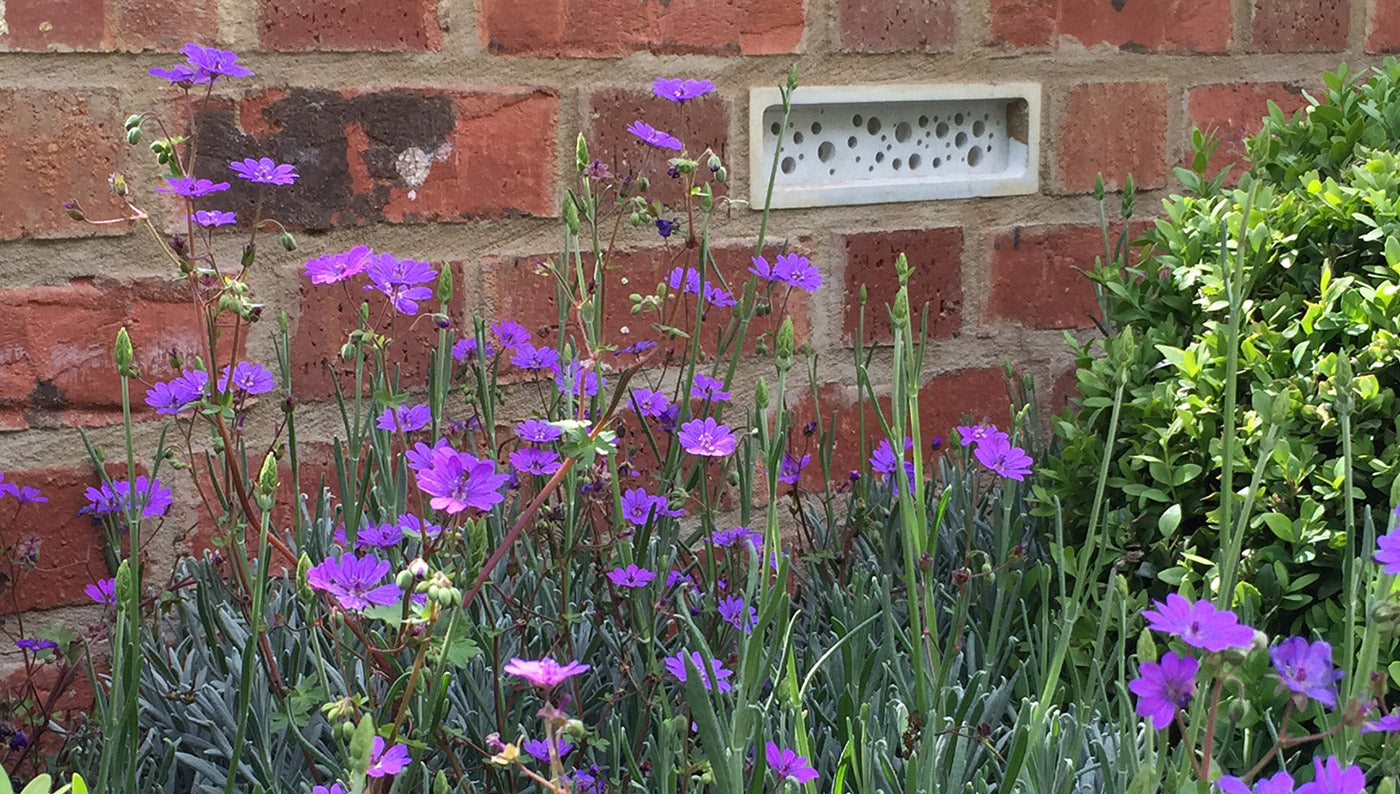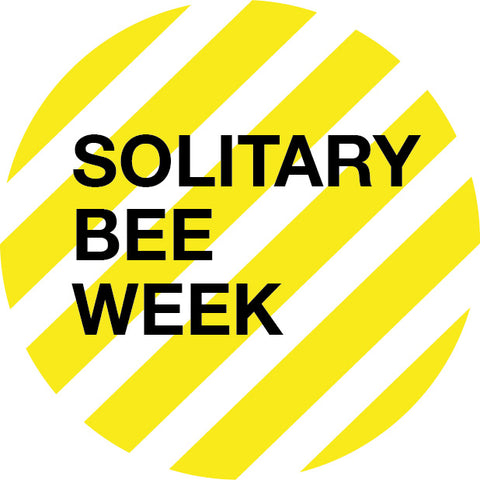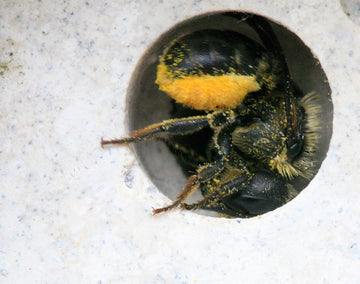5 things you need to know about solitary bees.
1. Solitary bees are different from honey bees and bumble bees.
Solitary bees are not simply bees who have left the hive and are now alone. There are over 200 species of solitary bee and, as the name suggests, they live alone, although in truth they often nest close to one another. They do not produce honey, do not have a queen and do not live in hives.
 2. Pollinators are responsible for around a third of all food we eat.
2. Pollinators are responsible for around a third of all food we eat.
Pollinators, including solitary bees, carry out a vital role in pollinating our crops, and also flowers and trees. In some parts of China pollination is already being undertaken by hand using paintbrushes because there are no bees left to do it naturally. We used to think that honey bees were the biggest contributors to crop pollination but that simply isn't the case today, all types of bees are important. 
3. Solitary bees are non-aggressive.
Because solitary bees do not have a store of honey to protect they are non-aggressive, meaning they are safe around pets and children. The males generally have no sting and the females will only sting if handled roughly or trod on. Perfect therefore to encourage into your garden or allotment or new build development.

4. They have a short, but busy, life cycle.
Generally (across the species) solitary bees emerge from their nests in the spring. Males emerge first and, after feeding, they hang around the nest waiting for the females. Once mating is complete the males die fairly quickly, what a life! After mating the females will begin the process of nesting, selecting a suitable site, constructing the nest and laying anything between 1 and 20 eggs. The eggs will hatch into larvae, which feed on pollen and nectar that the female has stored within each nest. The larvae develop and pupate, emerging the following spring (or later in the year depending on species) and repeating the cycle.
5. Their habitat is under increasing threat.
There are many factors in declining solitary bee numbers, including increased use of chemicals in farming, fewer wildflower meadows, and less suitable habitat. As fields become bigger we lose more hedgerows, which used to provide ample homes to a wide range of wildlife. Also as we build more and more properties and landscape our gardens we unwittingly destroy habitat and nests as we do so. We developed the bee brick as a means of increasing consideration for the habitat of cavity-nesting solitary bees, by creating a possible nesting site for them in each new development, garden or wall.

Solitary Bee Week
If you'd like to know more about Solitary Bees or fancy helping us spread the word about these brilliant pollinators then check out Solitary Bee Week, a week of action and awareness we organised to raise awareness of these 'other' bees.



41 comments
For 3/4 years I have made ‘Bee Hotels’ from small logs. Following summer activity the hotel chambers have been sealed and the following year bees have emerged. Last year (2022) was no different but so far this year no bees have emerged. Have there been problems of a general nature around the UK. I live in Cwmbran and don’t have contact with anyone who has knowledge of bees. I would appreciate your help. Andrew May
We have I think 2 solitary bees, one of which is a leaf cutter that have set up home in a rattan plant pot! Amazing to watch them.
We have a yard that is, except for a brown Turkey fig, entirely native central Texas plants with loads of wildflowers. The solitary bees are my companions when I am deadheading. I showed the children next door that you can even pet them. I also showed them how to create more bee housing and to keep the holes clean and free of disease.
We have a bee hotel. Almost all of the bee holes are now filled with wax. What do we do? I presume leave them, but will they come out this summer?
Hi,
We have a bee who is making a nest in a hole in our velux window. Any advice please as the home is indoors and not safe to leave the window open at all times? Thank you